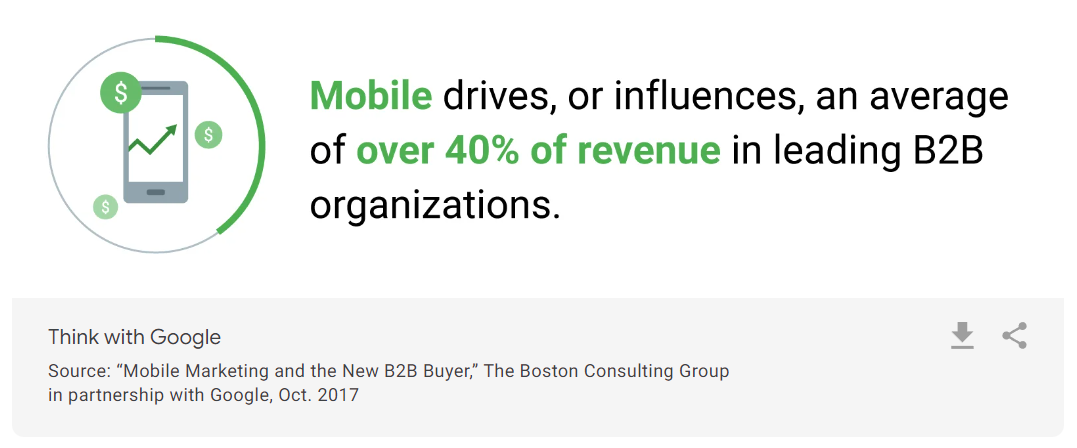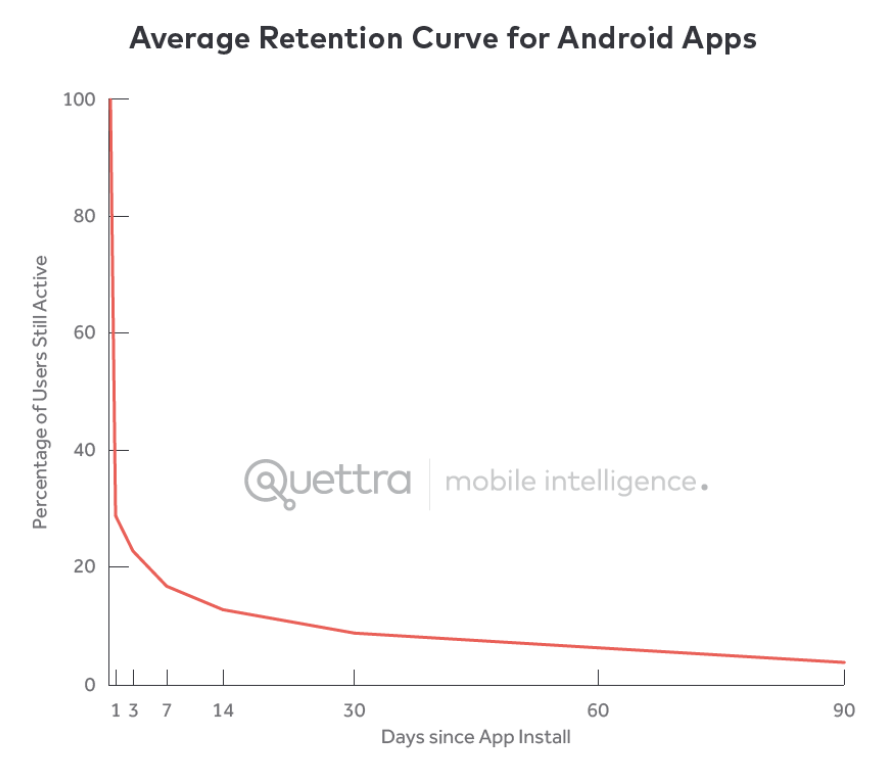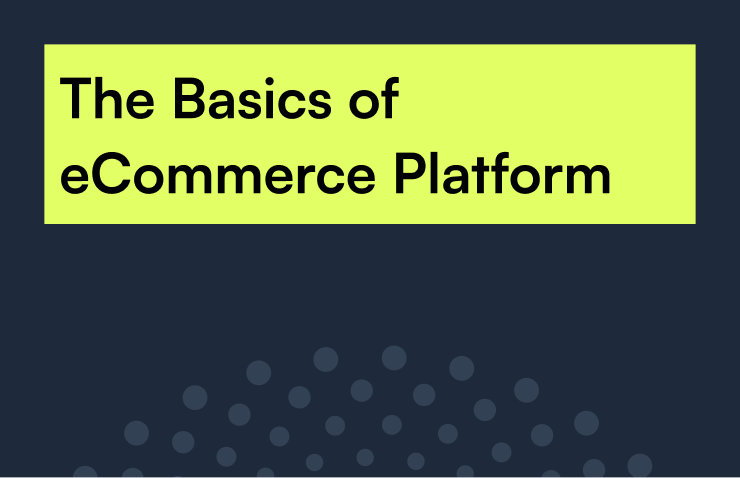8 billion people on the planet – 6.6 billion smartphones.
You can do the math.
It’s a small screen with enormous impact. Today’s professionals watch YouTube, shop Amazon, doomscroll Reddit, and respond to work emails all on their phone. Maybe even in bed – all at once.
Mobile commerce (m commerce) is exploding. B2B mobile commerce is a huge driver in that explosion, and it’s all targeted toward the devices that live in our pockets, purses, and desk chargers.
If you’re a B2B company that’s looking to sell online, you need a mobile first strategy. Let’s look at what that means.
How Popular Are Mobile Devices in B2B Purchasing?
Shopify recently shared than more than half of online purchases happen on mobile devices.
When you focus in on B2B purchases alone, Boston Consulting Group (in partnership with Google) found that at least 40% of it is driven by mobile usage.

There’s a very compelling case here: B2B mobile commerce is hot.
The other side of the coin is also worth looking at though. If we assume the inverse of the above statistics, you’ll note that 60% of B2B revenue and ~50% of purchases happen through traditional means.
Any reliable source of information on m commerce should not advocate that there’s no place for traditional selling – quite the opposite. In-person sales are essential, and your online presence should enable them. Omnichannel selling is also very important, and will likely remain so.
What we are saying is: the indicators show that the market share of B2B mobile commerce has grown, is growing, and will continue to grow.
If we acknowledge that moving B2B sales online is set to be powerful, we’re left to consider which approach is the best one. Business-to-business selling presents some unique challenges in mobile commerce and is going to require a different approach than B2C selling. We’ll cover some of the biggest elements to consider in the next section.
How Businesses Can Adapt to Mobile Commerce Sales
The functionalities needed to provide B2B consumers with an optimal shopping experience are different than B2C alternatives.
Online sellers like Amazon have set the bar very high. B2B retailers essentially need to launch with functional, feature-rich mobile interfaces that don’t sacrificing speed and efficiency.
Given the bar is so high (and required functions vary from industry to industry), our advice is designed to help you understand the landscape and make the best decision for your business.
Focus on Experience
B2B consumers want the same online experience that they get when they shop B2C in their personal lives.
What is that experience?
Speed and convenience.
The days of B2B buyers calling up a business to place an order for a large quantity are dwindling. People are becoming increasingly likely to make a purchase with the click of a button rather than drive to a physical location.
Given this shift, the buying process of an online shopper needs to be taken into account by ecommerce professionals.
What does this look like?
- Responsive design
- Acceptance of mobile payments
- Reduction of complex forms
- Ability to research your products or services
- Ability to utilize saved purchase info
- Tracking of a recent purchase
- Easy to use transaction histroy
- Option to view wholesale pricing quotes
- Accurate information on out of stock or in stock products.
You’ve probably heard that humans have worse attention spans than goldfish – an interesting but enlightening concept that provides a window into what customers look for.
What it means for online businesses is very practical though – capture attention and push users to the next thought/action.
This is achieved through effective design that prioritizes what mobile shoppers want – something your customer engagement team should be constantly focused on.
Empower Your Sales Reps
Companies are deciding more and more to take advantage of B2B mobile commerce options. Some even provide smartphones or tablets to their employees to place orders while away from their desks – a great option that reduces clerical errors and plays a significant role in increasing productivity.
As mentioned previously – this doesn’t mean that customers won’t interact with sellers through their usual interfaces. They’ll still visit your website and reach out to your customer service department when needed.
The key here is that new avenues and connections have been opened. Consumers will use them to engage with your business and research information about your products.
Your role is to empower your team to meet customers’ needs within this new channel.
This means finding, hiring, and training reps with digital savvy.
It also means considering the employee’s end of your mobile experience and how to empower each individual sales rep on the fly.
Educate Your Customers
Businesses should be acutely concerned about how effectively they educate their customers about products, services, and their buying process. This is an essential part of an effective mobile strategy.
Why?
Because more than half of the B2B purchasing process happens online.
Think about it this way: if you don’t provide a transparent purchase process to a potential customer, they’re very likely to compare that experience with a competitor’s. Such a factor might have driven a purchase decision against your business already.
But what goes into the education? A lot.
Your customer is the one who holds decision making powers in your relationship, and you do yourself no favors by withholding information.
You’ve likely heard that “content is king” – but that’s a vague nod to what content is, does, and provides for an ecommerce business.
Content is everything from your high quality product images to the flavor text of your “thank you” page. It’s engaging touches on 404 error pages that re-engage and pull a frustrated user back in. It’s clearly defined silos, category pages that provide context on how you’re different, and blog posts written by and for humans. It’s skimability and depth rolled into a single webpage.
In short – it’s education that doesn’t feel forced or pushy.
Never Stop Optimizing
To remain competitive and appeal to a larger base of customers, B2B retailers need to spend considerable time and resources on optimizing their mobile technology. This starts with a feature-rich mobile interface that doesn’t skimp on speed and efficiency.
From there, you’ll want to start tapping into various metrics and KPIs to ensure you’re pulling the right levers. This includes:
- Buyer behavior on your mobile site
- Conversion friction
- Cart abandonment rates
- Engagement of new customers vs. existing customers
- Effectiveness of your website’s entire experience
Mobile optimization gives the client the ability to make purchases, track orders, or contact customer support on a phone with the same ease as using a desktop interface. It also means the ability to search the entire product catalog and easily view product images or technical documentation.
Optimization allows you to find innovative ways to get more value from every customer – without being intrusive, pushy, or driving your customers away.
Should B2B Businesses Build Mobile Apps?
As the popularity of B2B mobile commerce increases, a lot of businesses are concerned about whether or not they should build a mobile app.
On the surface, this seems like a good idea. When built correctly, a native app allows you to provide the same experience as a website and acts as a natural extension of your brand. In some cases, you can even elevate your experience with push notifications and custom-built campaigns.
The reality is that native apps aren’t a favorable option for price conscious B2B senior executives. While you gain a bit of features, studies have shown that B2B buyers are reluctant to stick around on an app.
One study shared that the average app loses 80% of active users in just a few days.

To be clear – this is not all apps – but it is the average one. Your company may have a better strategy, a clearer use case, or more engaged mobile users in your industry.
The point here is that mobile apps should be approached with caution at first, and likely separate from the general mobile experience. User attrition and the fact that building effective apps takes forever means this path isn’t a good one – for now.
Conclusion
Let’s get to some final thoughts.
The majority of the advice provided in this post relies heavily on your ecommerce platform. B2B ecommerce relies on a unique set of features that you won’t get from an off-the-shelf platform.
Where you can get these features is from open source alternatives. Magento, for example, comes with an abundance of these features out of the box, and is well known for its B2B capabilities.
The catch? Magento builds aren’t simple, and take time and money to implement correctly. It’s the tradeoff that B2B sellers are increasingly facing, and where companies like Web Solutions NYC are trying to help.
With the right platform and agency behind you, creating a good experience for buyers is not only possible, but easily achievable. Talk to us if you’d like to know more, we love to hear from our readers.



